Wiley Post-Will Rogers Memorial
Commemorating the lives of a renowned humorist and a famed aviator who died in a plane crash in northern Alaska.
On August 15, 1935, Wiley Post and Will Rogers were flying together in a Lockheed hybrid airplane when they crashed just 15 miles outside of Point Barrow, Alaska. The engine had stalled just after take-off, causing the plane to nose-dive and crash into a lagoon. Both Post and Rogers died instantly.
Wiley Post had used his old but trusty Winnie Mae for both his round-the-world trips. However, Winnie Mae was now outdated, and Post needed a new aircraft for his Alaska-Russia venture. Struggling for funds, Post decided to piece together a plane that would suit his needs.
Starting with a fuselage from a Lockheed Orion, Post added extra-long wings from a Lockheed Explorer. He then changed out the regular engine and replaced it with a 550-horsepower Wasp engine that was 145 pounds heavier than the original. Adding an instrument panel from the Winnie Mae and a heavy Hamilton propeller, the plane was getting heavy. Post then changed out the 160-gallon original fuel tanks and replaced them with the larger—and heavier—260-gallon tanks. He also added pontoons onto the plane so that they could land on rivers, lakes, and marshes.
Since Rogers was anxious to start the trip and Post anxious to avoid the Department of Commerce inspector, Post took a pair of pontoons off a Fokker tri-motor plane and, despite them being extra long, had them attached to the plane.
The plane, which officially had no name, was quite a mismatch of parts. Red with a streak of silver, the fuselage was dwarfed by the huge pontoons. The plane was clearly too nose-heavy. This fact would lead directly to the crash.
Wiley Post and Will Rogers, accompanied by supplies that included two cases of chili, set off from Seattle at 9:20 a.m. on August 6, 1935. They made a number of stops, visited friends, watched caribou, and enjoyed the scenery. Rogers also regularly typed up newspaper articles on the typewriter he brought along.
After partially refueling at Fairbanks and then fully refueling at Lake Harding on August 15, Post and Rogers were headed to the very small town of Point Barrow, 510 miles away. He wanted to meet an elderly man named Charlie Brower. Brower had lived for 50 years at this remote location and was often called the “King of the Arctic.” It would make a perfect interview for his column.
Rogers was never to meet Brower, however. During this flight, fog set in and, despite flying low to the ground, Post got lost. After circling the area, they spotted some Eskimos and decided to stop and ask for directions.
After landing safely in Walakpa Bay, Post and Rogers got out of the airplane and asked Clair Okpeaha, a local sealer, for directions. Discovering that they were only 15 miles away from their destination, the two men ate the dinner offered them and chatted amiably with the locals, then got back into the plane. By this time, the engine had cooled.
Everything seemed to start okay. Post taxied the plane and then lifted off. But when the plane reached about 50 feet into the air, the engine stalled. Normally, this would not necessarily be a fatal problem since planes could glide for a while and then perhaps restart. However, since this plane was so nose-heavy, the nose of the plane pointed straight down. There was no time for a restart or any other maneuver.
The plane crashed back into the lagoon nose first, making a big splash, and then tilting onto its back. A small fire started but lasted only seconds. Post was trapped under the wreckage, pinned to the engine. Rogers was thrown clear, into the water. Both died immediately upon impact.
Okpeaha witnessed the accident and then ran to Point Barrow for help.
Men from Point Barrow got on a motorized whaleboat and headed to the crash scene. They were able to retrieve both bodies, noticing that Post’s watch was broken, stopped at 8:18 p.m., while Rogers’ watch still worked. The plane, with a split fuselage and a broken right wing, had been completely destroyed.
When the news of the deaths of 36-year-old Wiley Post and 55-year-old Will Rogers reached the public, there was a general outcry. Flags were lowered to half-staff, an honor usually reserved for presidents and dignitaries. The Smithsonian Institution bought Wiley Post’s Winnie Mae, which remains on display at the National Air and Space Museum in Washington, D.C.
Near the crash site now sits two concrete monuments to remember the tragic accident that took the lives of two great men.
Know Before You Go
The actual marker(s) are 14 miles south of town and inaccessible during the winter months. One of the two markers was moved in 2021 by helicopter to an area off Stevenson Road, near the college. As the coast erodes, the heritage center was concerned about the marker getting lost to the sea. It rests, without a sign, next to two whale skulls and is very noticeable.
A memorial is also located across from the street from the airport.

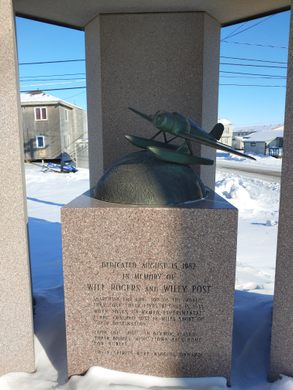


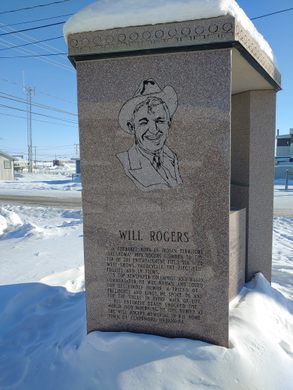





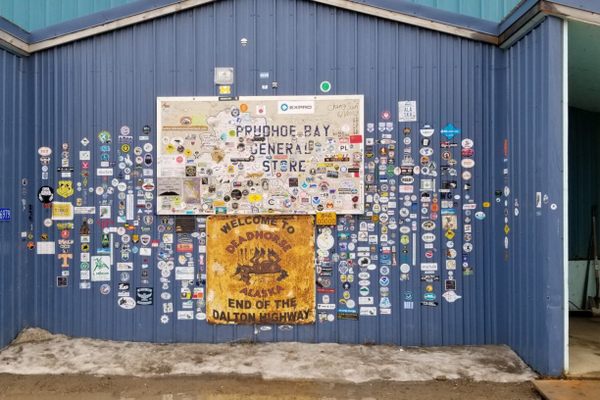
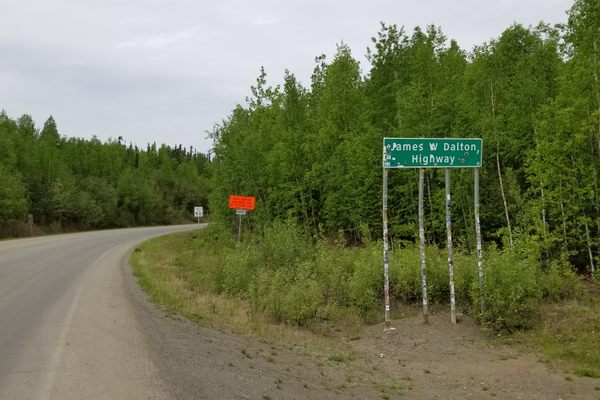
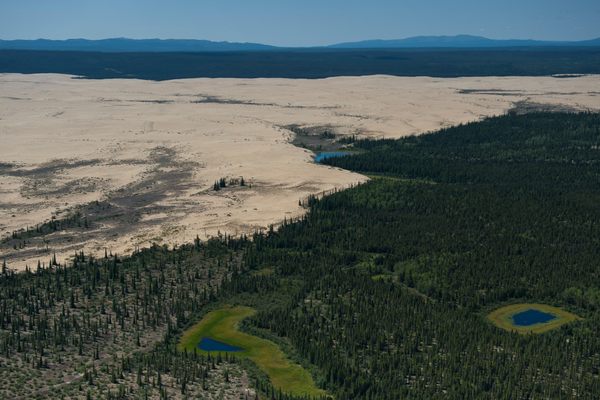



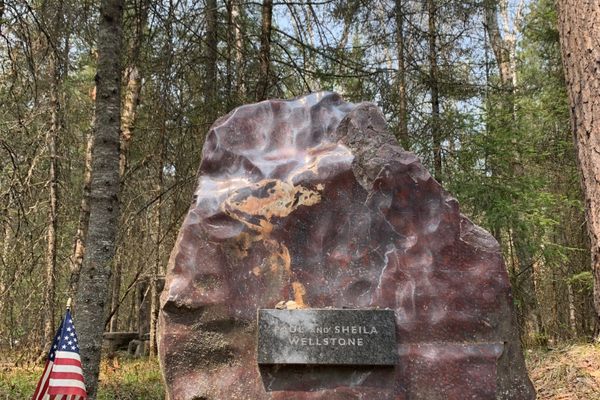

Follow us on Twitter to get the latest on the world's hidden wonders.
Like us on Facebook to get the latest on the world's hidden wonders.
Follow us on Twitter Like us on Facebook